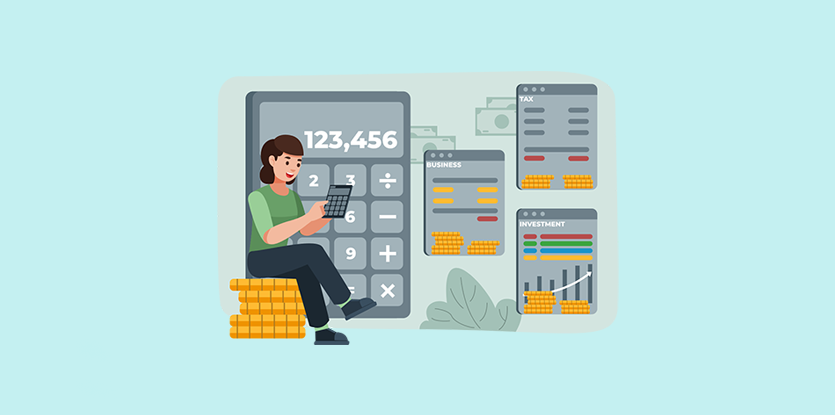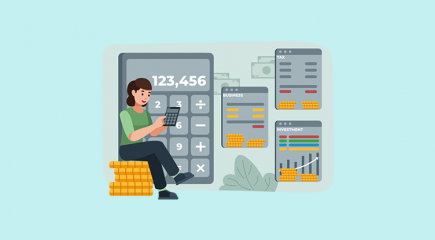The current ratio is a liquidity ratio that measures the company’s ability to settle short-term debts using liquidity. The financial ratio is used to evaluate a company’s ability to pay its short-term obligations, such as wages and account payable. It is computed by applying the company’s current assets and then dividing them by the company’s current liabilities.
The current ratio tells if a company can pay debts owed within a year. Creditors make use of this metric tool to determine whether to give the company a short-term loan. The current ratio is important because measures a company ability to turn assets into cash or its efficiency in running the business.
Current Assets
The company’s balance sheet contains the current assets and liabilities. These liquidated assets comprise of inventory, accounts receivable, cash and cash equivalents. The cash equivalents are funds that take up to three months to mature or can be converted into cash with ease. They include money market funds, government bonds, and commercial paper. Thus, companies that possess a large number of current assets are most likely to settle the current liabilities with ease when due without necessarily interfering with any fixed assets.
However, current liabilities include wages payable-wages earned by employees and yet to be paid, income taxes payable-taxes owed to the government, dividends declared, and accounts payable. If a company has to sell its long-term income-generating assets, it means it’s not creating enough to fund its activities. It may be from debtors not honoring their due owed to the company.
Significant Current Ratio Terms
- Market securities: These are open short-term obligations issued for debt security or equity security for a public listed company. The company creates these mechanisms to raise funds for expansion or to finance a business activity. They include preferred stock, common stock, and corporate and government bonds with one year or less maturity date.
- Accounts receivables: these are sales made on credit by a company and are not fully paid. It is the money owed by customers that is payable within a year. The companies allow the clients to settle their dues at a reasonable time as long as they agree on terms.
- Prepaid expenses. These are expenditures already settled by the company, though not yet recorded as expenses. They include early payment for upcoming procurement and unexpired insurance premiums.
- Inventory: These are accounts detailing all raw materials, finished goods, and work in progress, packaging /manufacturing supplies a company has accrued. It is challenging to convert inventory assets into cash.
- Notes receivable: These are promissory notes written to promise to pay cash to a given party at a stated time. The note receivable is preserved as a current asset if it is payable within the first year.
- Office supply: They include office resources (equipment, pens, and papers) normally used within a year.
- Current liabilities: These are business obligations and payments owed to creditors and suppliers, and they are due within a year.
- Accounts payable: It is a liability incurred when a business receives services and goods on credit. It includes usage of utilities and services, purchase or raw material, goods, or supplies.
- Deferred revenue: Liability is incurred when a company receives payment for services or goods not yet earned.
- Accrued expenses: They include interest payable, income taxes payable, payroll taxes payable, and all other expenses accrued.
- Notes payable: That is the principal sum and interest payable due in one year.
Current Ratio Formula
Current ratio is calculated by dividing current assets by liabilities.
Current Ratio = Current Assets / Current Liabilities
Example
Let’s take a business with $200,000 and $150,000 worth of current assets and current liabilities, respectively.
Current ratio = $200,000 / $150,000 = 1.33.
The average current ratio figure for businesses depends on its industry; however, the rule of thumb is a ratio above 1.0 is a good sign of liquidity. A figure of 1.33 means the company is better placed in settling its debts owned.
But, if a business has $500,000 and $700,000 worth of current assets and current liabilities, the current ratio is $500,000 / $700,000 = 0.7.
It means the company will have some challenges in meeting current obligations. A higher ratio shows that the company is more liquid. Most companies accept and are comfortable with a ratio above 1.0. However, the acceptable ratio varies across industries.
Companies with a current ratio of less than one are most likely to have difficulties paying off their current debts. However, a sound operating cash flow can back up a low current ratio. Therefore, it is essential to assess the companies operating cash flow to understand its liquidity. On the other hand, the companies with a higher than normal current ratio (more than 2) lack efficiency in using short-term financing or its current assets. It could also mean a problem in the management of the operational capital.
Typically, when short-term creditors look at the financial health of the company, they prefer a high current ratio because it reduces their overall risk.
Importance of Current Ratio
- The current ratio provides a good idea of the operating cycle of the firm. It helps in understanding the efficiency of the company when it comes to selling off the products or how quickly the company can convert its assets to revenue
- It helps in determining the efficiency of management in meeting the demands of creditors
- It helps the investors to understand the company’s health status.
Disadvantages of the Current Ratio
- Inventory and accounts receivables, are used to calculate the current assets, but they are not easy to convert into cash. In several companies where higher inventory levels are there because of fewer sales or the obsolete nature of the product taking inventory into the calculation can lead to the displaying of incorrect levels of liquidity. It means the current ratio may not be the best measure for a company’s short-term liquidity.
- The current ratio can be highly deceiving if a company’s seasonal high sales at a particular time are used to calculate the ratio. It is not advisable to use the ratio on a standalone basis to analyze the company’s liquidities.
- An equal increase or a decrease within the current assets and liabilities may alter the ratio. If it is easy to manipulate, it becomes less reliable.
Comparing the current ratios with other liquidity ratios, such as the quick ratio or cash ratio, assesses how a company is operated to show its stability. The current ratio is an essential tool in making resolutions for investors, suppliers, and creditors. It is a significant metric ratio in evaluating the feasibility of the business.
Free Options Education
Have you been trading stock but want to take that next step to options? Options traded properly can add a significant boost to any portfolio. Options not only allow traders to make more money using less capital, but they also provide a powerful means to diversify an already existing stock portfolio. Learn how to take full advantage of stock fluctuations by implementing options. Those who want to take their portfolio to the next level, sign up for our free options trading course today.


